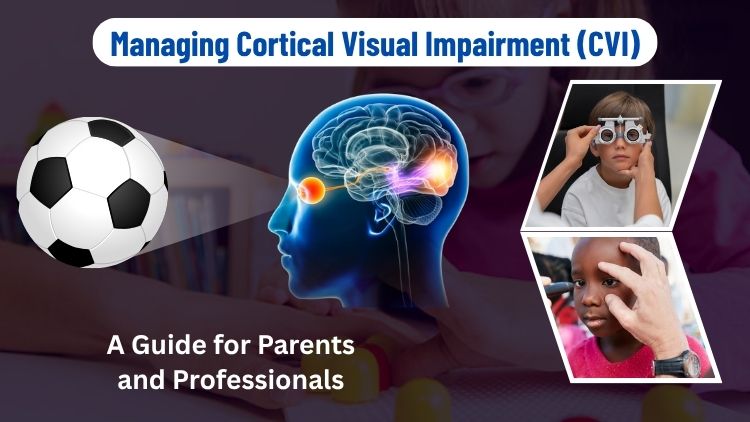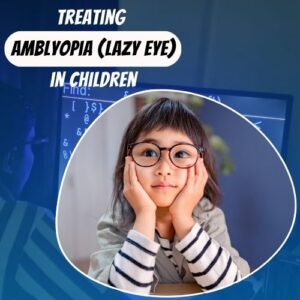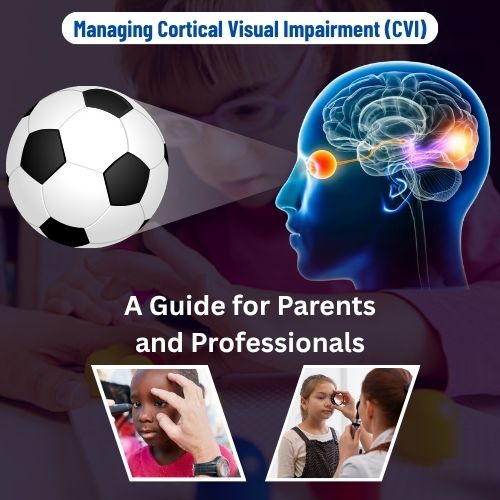Managing Cortical Visual Impairment (CVI) in Children: A Guide for Parents and Professionals

Cortical Visual Impairment (CVI) is one of the leading—but often overlooked—causes of visual challenges in children. Unlike traditional eye conditions, CVI results from the brain’s difficulty in processing visual information, even when the eyes appear structurally normal. With timely intervention and appropriate support, children with CVI can make remarkable progress in both visual function and overall development.
This guide is designed for parents, educators, and healthcare professionals seeking to understand, manage, and support children with CVI effectively.
Understanding Cortical Visual Impairment
What is CVI?
Cortical Visual Impairment, often known as cerebral visual impairment, is a brain-based visual condition. Children with CVI have normal eyes, but their brains are unable to interpret the visual information transmitted correctly.
If you’re concerned about your child’s vision and live in Maharashtra, consider consulting a pediatric eye specialist at Nandadeep Eye Hospital.
How CVI Differs from Ocular Visual Impairments
Traditional visual impairments start in the eyes, but CVI is a neurological disorder. The key difference is that even if a child’s eye test seems normal, they may nevertheless experience substantial visual problems due to how their brain interprets visual information.
Common Causes in Children
- Trouble from low brain oxygen.
- Problems due to early birth.
- Issues with the brain or nerves.
- The brain is affected by head injury.
- Pressure from brain fluid buildup.
- Seizures shortly after birth.
- Brain problems from genetic conditions.
Signs and Symptoms in Early Childhood
- Delay in responding to visual inputs (visual latency).
- A preference for moving things or certain colours.
- Difficulty identifying faces or familiar things
- Having trouble breaking down a complex or crowded visual environment.
- Unusual visual behaviours, such as light-gazing or relying on peripheral vision
Diagnosing CVI
Role of Specialists
The best paediatric ophthalmologist, neurologist, and, on rare occasions, an optometrist will do a complete exam. The approach normally starts with a conventional eye exam to rule out any ocular abnormalities, followed by neurological and functional tests.
Assessment Tools
- Functional vision exams
- Brain scans (e.g. MRI)
- Observe how the child uses their eyesight in everyday environments.
A Multidisciplinary Approach
Since CVI often occurs alongside other developmental or neurological conditions, diagnosis and management should involve a collaborative team of healthcare and educational professionals.
Visual Characteristics of Children with CVI
Children with CVI often exhibit distinct visual patterns, including:
- Visual latency: Responding to visual stimuli with a marked delay.
- Field preferences: Displays visual attention preference for a specific part of their visual field.
- Colour preferences: CVI can cause an attraction to specific colours, like red or yellow.
- Light-gazing: Light sensitivity is a common trait of Cortical Visual Impairment (CVI).
- Difficulty with complexity: Difficulty identifying objects in busy visual settings.
- Challenges with distance and recognition: CVI can cause challenges in recognising faces or objects, especially in complex environments.
Stages of CVI
Christine Roman-Lantzy’s CVI Range categorises CVI into three stages:
- Stage I: Developing visual attention and basic visual responses
- Stage II: Using vision functionally and processing more complex visuals
- Stage III: Applying vision for learning and interacting with varied environments
Understanding which stage a child is in helps guide effective, developmentally appropriate interventions.
Creating a CVI-Friendly Environment
Children with CVI benefit significantly from an adapted visual environment. Strategies include:
- Reducing visual clutter to enhance focus
- Using high contrast between objects and backgrounds
- Incorporating preferred colours to grab and sustain attention
- Simplifying backgrounds to reduce distractions
- Controlling lighting to avoid glare or overstimulation
- Using familiar and motivating objects to encourage visual engagement
Strategies for Visual Stimulation and Learning
- Establish predictable visual routines
- Use real, tangible objects instead of abstract pictures
- Integrate vision into daily activities (e.g., reaching for food, toys)
- Pair visual input with tactile and auditory cues for better reinforcement
The Role of the Interdisciplinary Team
Managing CVI requires coordinated efforts. A child’s support team may include:
- Parents and caregivers
- Special educators
- Occupational therapists
- Orientation and mobility specialists
- Speech and language pathologists
Together, they create and regularly review an Individualised Education Plan (IEP) tailored to the child’s evolving needs.
Technology and Assistive Tools
Children with CVI can benefit from:
- Tablets and apps with bold, simple visuals and high contrast
- Adaptive toys and communication tools
- Personalised tools based on the child’s stage and visual preferences
Customisation is crucial. Individualised strategies are necessary due to varying effectiveness for children.
Learn more about our rehabilitation and vision therapy services for children.
Emotional Support from Family Members
Coping with a CVI diagnosis can be overwhelming. Support for families is just as important as therapy for the child.
- Encourage active parental involvement in therapy
- Celebrate small milestones and progress
- Connect with support groups or other families facing similar challenges
Long-Term Outlook and Progress Monitoring
Many children with CVI show significant improvements over time. Regular reassessments ensure strategies evolve as your child grows.
Early and consistent intervention from a trusted pediatric eye hospital, such as Nandadeep Eye Hospital, ensures that your child receives the best possible care and support throughout their developmental journey.
Conclusion
Cortical Visual Impairment presents unique challenges, but with timely diagnosis, personalised interventions, and a supportive team, children can achieve meaningful progress. Hope, patience, and proactive collaboration between families and professionals form the foundation for success.
If you believe your child may be showing signs of CVI, don’t hesitate to consult with an eye specialist. Every small step forward can lead to a brighter future.
More Posts

Everything You Should Know About Pediatric Eye Exams

काचबिंदू (Glaucoma): नियमित नेत्रतपासणी का आवश्यक आहे?







